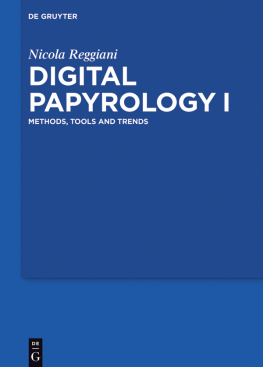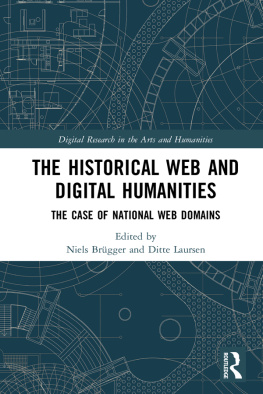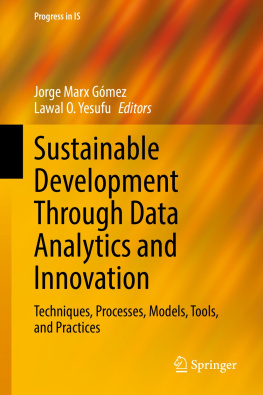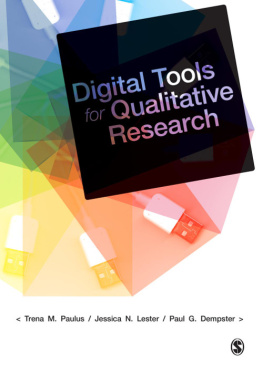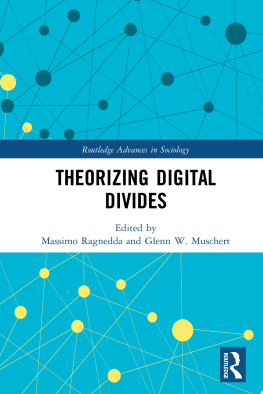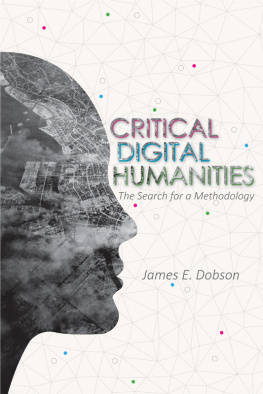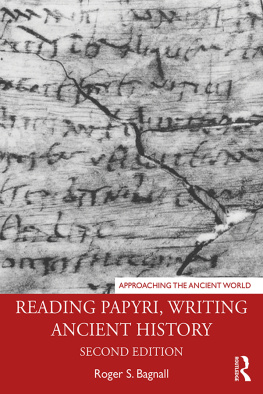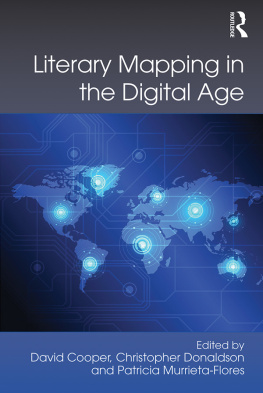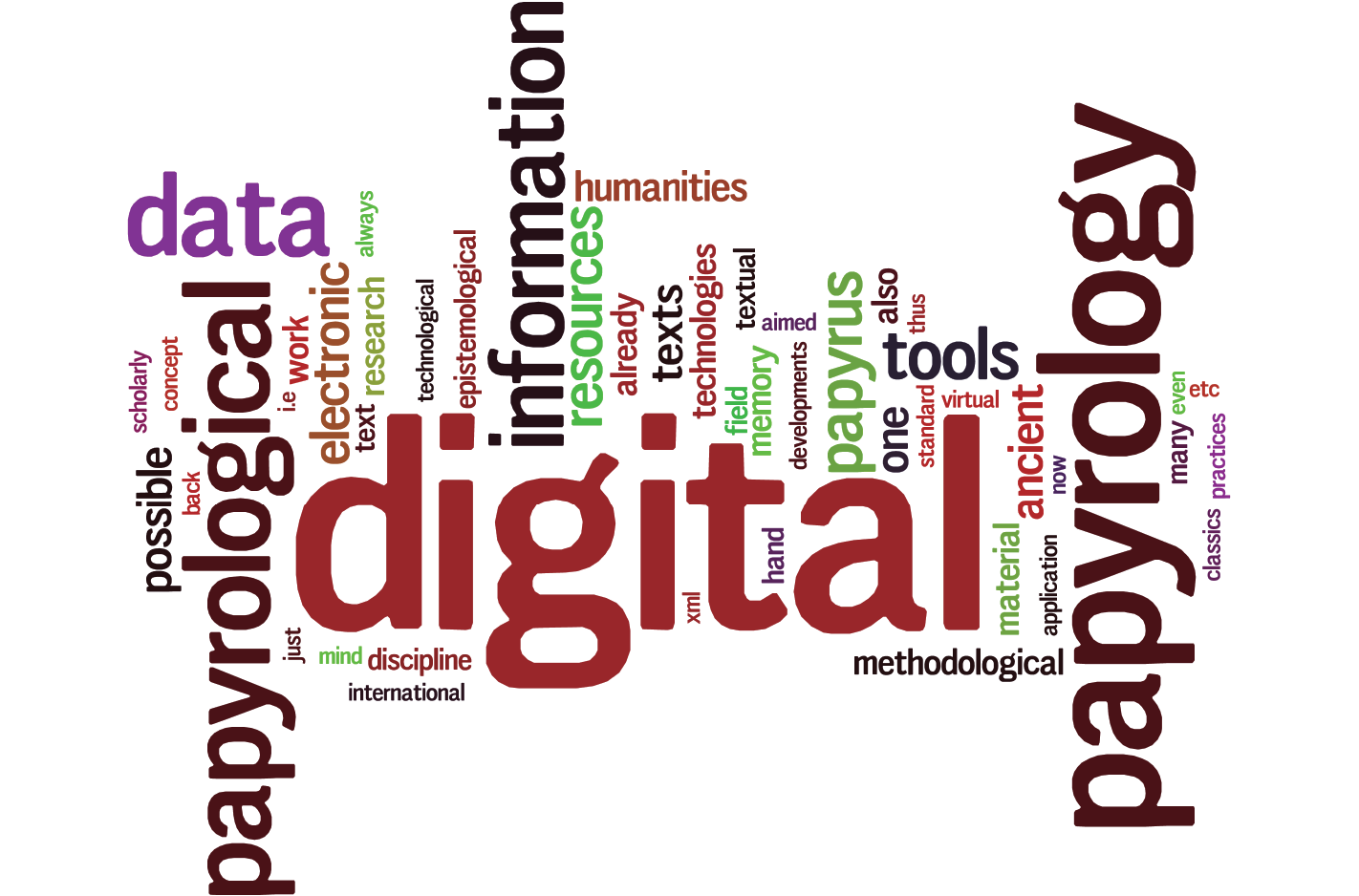Table of Contents
Guide

Nicola Reggiani
Digital Papyrology I
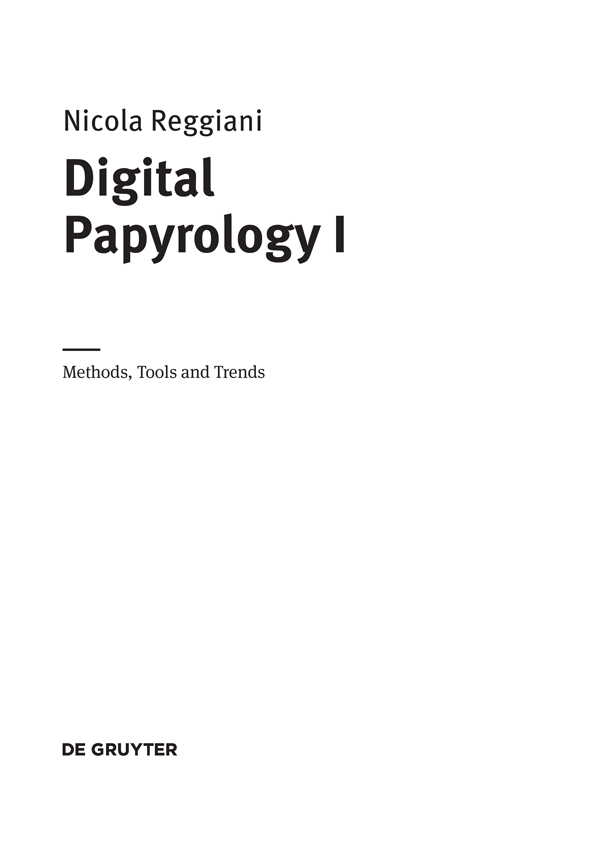
ISBN 978-3-11-053851-9
e-ISBN (PDF) 978-3-11-054747-4
e-ISBN (EPUB) 978-3-11-054760-3

This work is licensed under a Creative Commons Attribution-NonCommercial-No-Derivatives 4.0 International License. For details go to https://creativecommons.org/licenses/by-nc-nd/4.0/.
Library of Congress Cataloging-in-Publication Data
A CIP catalog record for this book has been applied for at the Library of Congress.
Bibliographic information published by the Deutsche Nationalbibliothek
The Deutsche Nationalbibliothek lists this publication in the Deutsche Nationalbibliografie; detailed bibliographic data are available in the Internet at http://dnb.dnb.de.
2017 Nicola Reggiani, published by Walter de Gruyter GmbH, Berlin/Boston
The book is published with open access at www.degruyter.com.
www.degruyter.com
Acknowledgments
I owe my first acquaintance with Digital Papyrology to Professor Isabella Andorlini, who admittedly has been a pioneer in the systematic application of electronic resources to papyrological scholarship, from the effective use of textual databases to virtual restoration of fragmentary documents. I would like to dedicate this work to Her, in memory of all this.
My grateful thoughts then go to Fabian Reiter, who allowed me to hold a class of Digital Papyrology at the University of Trier during the Winter Semester 2016/17, which gave me really many useful and interesting suggestions about the topics discussed here. He also supported this publication, for which I wish to thank also Mirko Vonderstein and my other contact people at De Gruyter (Katrin Hofmann, Florian Ruppenstein), who have been so kind, patient and efficient in following all the publishing steps. I am grateful also to the students who actively took part into the Trier seminar (Julius Bergau, Spyridoula Bounta, Pia Geiel, Sara Marmai) for all the fruitful discussions we had together.
I would like to mention also the Digital Papyrology seminars conducted by Rodney Ast, James Cowey and Lajos Berkes at the Institute of Papyrology of the Heidelberg University directed by Prof. Andrea Jrdens, the attendance of which has proven helpful for improving my experience in this rising field, as well as my participation in the digital classes of the SunoikisisDC programme (Leipzig University), coordinated by Monica Berti. I also thank my colleagues and friends Davide Astori, Francesca Bertonazzi and Isabella Bonati, with whom I shared several phases of my research.
I wish this thank-list were longer, because I would have loved to discuss all the topics and resources with more people. Unfortunately, unpredictable tragic circumstances slightly affected the conclusion of the ERC DIGMEDTEXT project, from .
The present work is not exactly a handbook most of the digital tools do already offer detailed instructions and help guides, to which I gladly refer , nor just a list of tools. Recent detailed surveys of the digital papyrological scenario already exist.
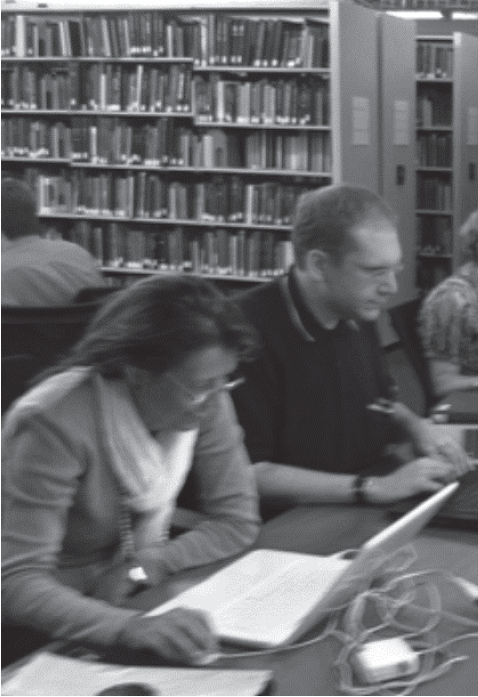
Isabella Andorlini and Nicola Reggiani at the SoSOL Training Session,
Duke University (Durham, NC), July 2010.
1Tablets of the Mind (An Introduction)
Papyrology is known for its many resources and working tools.
Dorothy J. Thompson
Being a set of (electronic) ways of treating human information and knowledge, Digital Humanities can be considered as the direct heir of those cognitive technologies that have been analysed in relation with mens knowledge and memory in Jocelyn P. Smalls monograph. Smalls essay shows that the problem of the relationship between creating information material (data) and the ways of accessing it is definitely ancient, and that the transition from human memory the very first tool for storing and retrieving information! to artificial intelligence is just a technological and chronological swerve, not a conceptual one after all, it is not by chance if we still speak of electronic memory devices.
.
For this reasons, informatics is topical in the field of the Humanities.
Offering a complete overview of the issues entailed by Digital Humanities today is definitely arduous in this introductory place, and not strictly relevant here. Definitions are difficult too: saying that Digital Humanities is concerned with the applications of computing to research and teaching within subjects that are loosely defined as the humanities.
1.1Papyrology in the Digital Vanguard
Within this digital framework, Papyrology a discipline concerned with the recovery and exploitation of ancient [everyday] artifacts bearing writing and of the textual material preserved on such artifacts, with chronological boundaries usually placed between the Hellenistic and the Arab periods, especially but not only in Egypt. There are multiple reasons for this.
The first and foremost reason is epistemological. Papyrology is grounded on instances of comparison and discussion .
Comparing and discussing imply, on one hand, circulation of the relevant data, and, on the other hand, their availability, in terms of both sharing and accessibility:
the challenge facing the scholarly community as a whole will be to work together as much as possible, to avoid any expensive duplication of work, and to try to integrate data from as many different sources as possible, while keeping in mind that each resource has to survive its own creator, to meet the demands of its own public and to overcome specific difficulties.
In both cases, the potential and the immediacy provided by the digital tools namely those web-based offer themselves as the best solution to support the work of the papyrologist as an artificer of facts, discoverer and provider of data.
A second reason is methodological. Papyrological methodology is not easy to outline there is traditionally a philological approach, which tends to define protocols for text editing and criticism. Generally speaking,
Papyrology has tended to be one of the most resolutely technical and positivistic disciplines of antiquity. This characteristic has justifiable roots in the enormous investment of time and expertise, in palaeography and philology, that is necessary for reading and interpreting the texts, often preserved only fragmentarily and in difficult handwritings.
. It is intriguing to note that the very thirty years preceding the outbreak of Digital Papyrology in the mid Sixties underwent a systematic insistence on organization issues (problemi di organizzazione), forwarded mainly by the outstanding Italian scholars Aristide Calderini and Orsolina Montevecchi.
It is not pedantic to resume their claims here because not only are they very topical still today, but also they actually seem a true methodological foundation for what would have become Digital Papyrology and its main resources, since it is in the advantages of the electronic tools that Papyrology finds the best way of dealing with its baseline issue, i.e. coping with an overwhelming amount of data:

